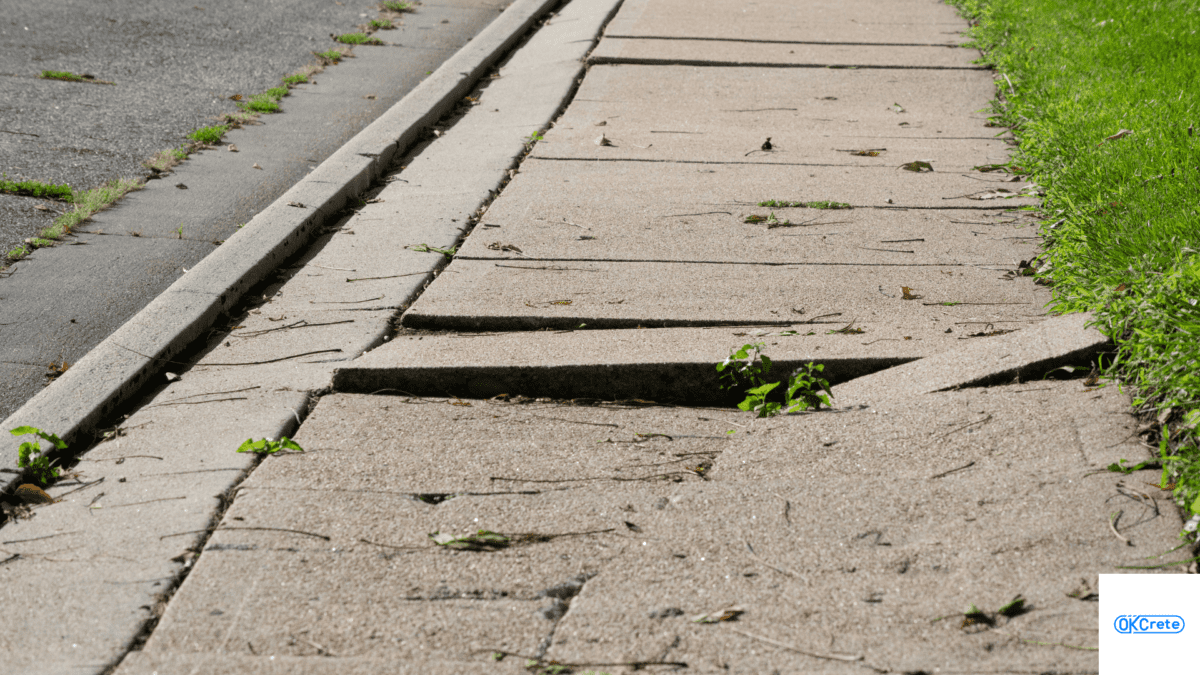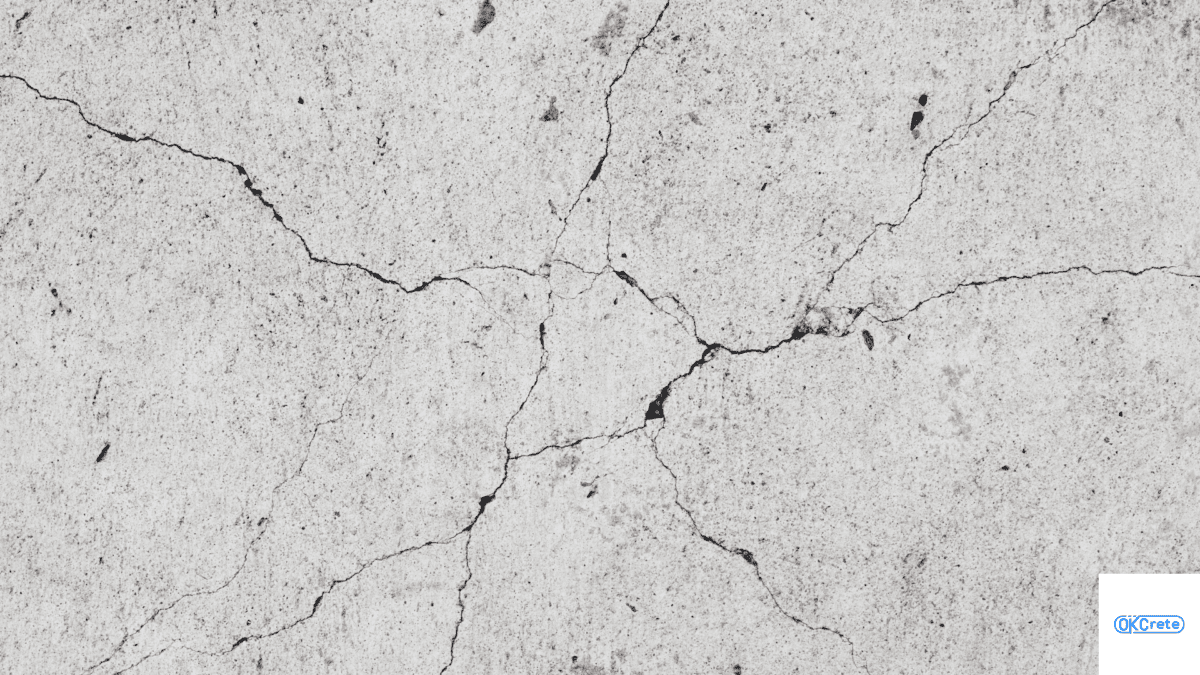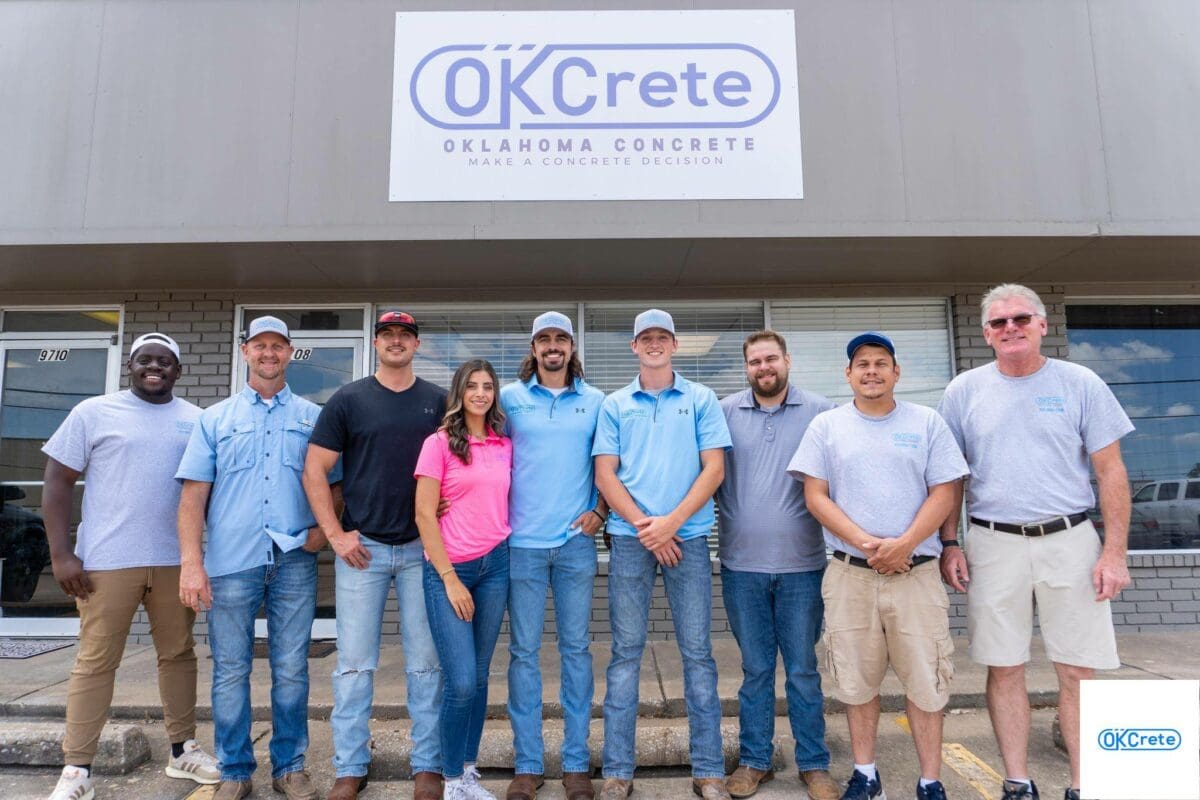As we’re sure you know, concrete is a widely used construction material known for its strength and durability. However, despite its Iron Man-like strength, concrete is susceptible to developing cracks over time. There are many different types of concrete cracks but the four we’ll be talking about today include plastic shrinkage cracks, expansion cracks, heaving concrete cracks, settling concrete cracks, and overloading on concrete. Let’s get into the different types and how we can help with concrete repair work.
Shrinkage Concrete Cracks
Shrinkage cracks can appear in the first few hours after concrete placement and typically before the finishing project is complete. These cracks can occur in freshly poured concrete during the early stages of its curing process. They’re primarily caused by the rapid evaporation of moisture from the ground onto the concrete surface before it has gained enough strength.
Here’s an example of how shrinkage cracks happen:
During the construction process, fresh concrete is poured into the desired formwork or molds to shape the structure. At this stage, the concrete is in a more plastic state, or fluid state, making it easy to work with and manipulate.
After the concrete slab is placed, it’ll start to harden. While this is happening, the moisture within the concrete mix starts to evaporate from the surface due to environmental factors like hot weather, low relative humidity, and wind.
As the moisture evaporates, it leaves behind pores in the concrete, making the surface dry faster than the interior, which creates a difference in moisture content and induces surface tension. This tension acts as a force that pulls the concrete particles together, creating tensile stresses at the surface.
During the early stages of curling, the concrete has typically not yet developed enough strength to withstand these tensile stresses effectively and as a result, small cracks will form.
OKCrete can perform this type of concrete repair work by taking appropriate measures to repair the cracks and prevent further deterioration so you won’t have to worry about “cracking your mother’s back.” Heh heh.
Expansion Concrete Cracks
Expansion cracks in concrete are a type of crack that occurs due to the expansion of the concrete material itself. Unlike other types of cracks caused by external factors, such as loading or drying, expansion cracks result from internal forces within the concrete.
This usually happens when concrete undergoes changes in temperature, as it has the unique property of expanding when exposed to higher temperatures and contacting when subjected to colder temperatures.
They can take place in various concrete structures including pavements, concrete foundations, buildings, bridges, and other outdoor/indoor constructions. You’ll notice this if you see straight lines appear in a variety of widths.
Fixing these involves addressing the underlying causes of the cracks and implementing the proper construction and appropriate repair techniques. So, we’ll assess the crack, clean it, provide room for movement, choose the repair material, apply bonding agent, inject or fill the crack, smooth and finish, cure and repair, and of course, monitor and inspect it to stay on top of any further issues.
Heaving Concrete Cracks

Heaving concrete cracks are probably the most common types. You’ll notice these while taking your morning walk, going for a bike ride, or just looking out your window. Heaving cracks refer to cracks that occur due to upward movement or swelling of the concrete surface. So, unlike typical cracks caused by external forces or temperature-related sources, heaving cracks result from the underlying ground movements or changes beneath the concrete slab’s surface.
There are a few ways this can happen:
- Frost Heave: This is one of the most common causes of heaving cracks. When water in the soil begins to freeze, it expands, causing the concrete to lift, crack, or become uneven.
- Expansive Soils: Be careful what soil you choose before you call OKCrete to lay down concrete! There are certain types of soils that are known as expansive soils. They have the ability to absorb water and shrink when dried out. These soils can cause the concrete to heave and crack as the soil goes through these changes.
- Tree Roots: These are probably the most common that you may see while walking through your neighborhood, and you’ve probably tripped over this before. Large tree roots beneath concrete can exert significant pressure, causing the concrete to heave and crack as they seek water and nutrients.
- Drainage Issues: If there are any drainage issues around the concrete of your home, changes are, water will accumulate beneath the slab or footing, trapping water, and creating the soil to swell. This will in turn, lift the concrete, creating those heaving cracks.
- Plumbing Leaks: If you’re experiencing water leaks from your pipes or plumbing system that may be located under concrete, this will eventually cause heaving cracks – so get your plumbing issue fixed ASAP to prevent further damage!
Settling Concrete Cracks

Settling cracks, also known as settlement cracks, will appear due to uneven or differential settling of the concrete structure. They are a result of the downward movement or subsidence of a part of the concrete, mainly caused by inadequate or unstable support beneath the structure. How does settling concrete cracks occur?
- Inadequate foundation support
- Uneven load distribution
- Soil erosion
- Water-related issues
Settling concrete cracks can vary in size, shape, and location and often appear as vertical cracks, some may be wider at the top and more narrow at the bottom. They can also occur at the junctions between different elements of the structure, such as the corners of walls or between slabs and foundations.
Overloading on Concrete
Overloading on concrete refers to applying excessive loads or stresses to a concrete structure beyond its designed capacity. This is one of the most common reasons for concrete cracks post-projects. When the concrete is subjected to loads much more than it can handle, it’ll most likely lead to several undesirable effects – one of them being the formation of cracks.
How Concrete Cracks can Affect Your Home or Business

Concrete cracking can have various effects on your home or business, ranging from aesthetic concerns to a potential structural issue. The impact of concrete cracks depends on their size, location, and underlying cause. Here are some ways concrete cracks can affect your home or business:
Aesthetics: Concrete cracks can significantly impact the appearance of your home or office building, especially if they are visible on the exterior walls, driveways, sidewalks, or patios.
Water Infiltration: Cracks in concrete can act as pathways for water to enter your home. This can cause water damage problems such as mold growth, rotting wood, and damage to interior finishes.
Foundation Stability: If concrete cracks appear in the foundation, they can compromise the stability and load-bearing capacity of the entire structure. This cracking can lead to uneven settlement of the home or building, causing doors and windows to become misaligned as well as other issues.
Structural Integrity: Concrete cracks can weaken load-bearing elements like columns, beams, and walls, compromising the overall structure and posing safety hazards.
Property Value: The presence of visible concrete cracks can negatively impact the value of your home. Potential buyers could perceive it as a sign of poor maintenance or structural problems, making it a lot harder to sell.
About OKCrete

At OKCrete, we provide high-quality concrete placement for both residential and commercial projects. We have set high standards for concrete placement and provide all our clients with the right guidance and solutions that are designed to last.
With us, you can protect your driveways, patios, and buildings from structural damages with our professional concrete services. No project is too big or small for us. We treat every project with the precision it deserves.
If your home or office in Oklahoma needs new concrete or concrete repair work, trust us – the expert concrete contractor – to complete your job effectively and on time.
Why choose us? We provide premium quality, where you can rely on us for the finest quality and exclusive experience; you can trust us to efficiently complete your project within your budget; we prioritize client satisfaction above everything else, as our team doesn’t consider a job done unless you are 100% satisfied; and we have a team of experts to assess your needs and make a concrete decision for your project.
